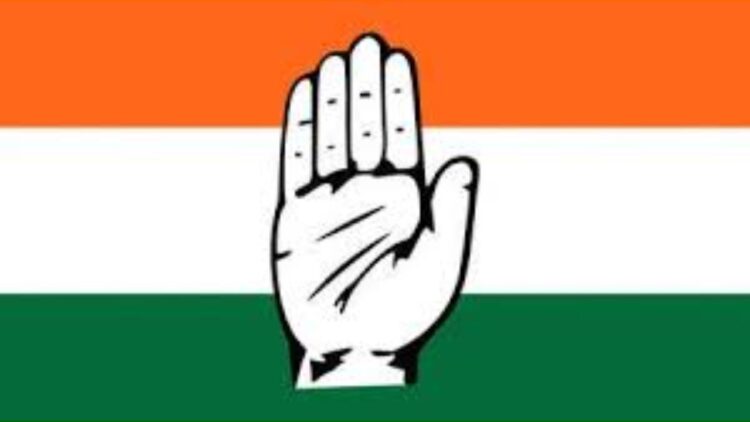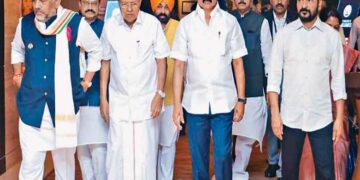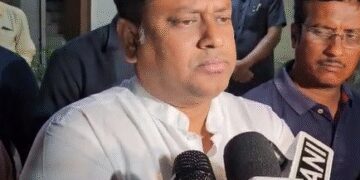Congress party: Indian National Congress (Indian National Congress – INC) is the oldest and historical political party in India, which was founded on 28 December 1885 under the leadership of British officer AO Hume, Dadabhai Naoroji and Dinasha Covenant at Gokuldas Tejpal Sanskrit College, Mumbai (then Bombay). The Congress party played a leading role in India’s freedom movement and after independence, effectively ruled the country’s power.
History of Congress at a glance
• 1885 to 1947 – Leading of freedom movement
• After 1947 – politics of power and policy role
• 1969 – First major break in Congress party (Syndicate vs Indira Gandhi)
• 1975-77-Emergency applied, question on democratic institutions
• 1984 – Rajiv Gandhi’s leadership after the assassination of Indira Gandhi
• 1991 – Liberalization and economic reform of PV Narasimha Rao
• 1998 – Sonia Gandhi’s entry into active politics
• 2004-2014-UPA Government leadership
• After 2014 – continuous electoral defeat and organizational crisis
Major disputes in Congress sessions
1. Surat Split (1907) – Garam Dal vs soft party
Surat session was the first major controversy in the history of Congress in which ideological differences between Bal Gangadhar Tilak and Gopal Krishna Gokhale emerged. As a result, the party was divided into two parts.
2. Tripuri controversy (1939) – Netaji vs Gandhian faction
After Subhash Chandra Bose became Congress President at the Tripuri session, he confronted the supporting leaders of Mahatma Gandhi. Netaji eventually resigned from the post of president.
3. Partition of 1969 – Indira Gandhi vs. Syndicate
Congress (O) and Congress (I) were born due to organizational dispute. The Congress (I) emerged strongly under the leadership of Indira Gandhi.
4. Emergency period (1975-77)-Democracy
There was a dispute and opposition across the country over the decision of Indira Gandhi to declare an emergency. This caused a deep hurt to the democratic image of the Congress.
5. Recent controversy – leadership crisis
The party has been constantly facing electoral defeat under the leadership of Sonia Gandhi, Rahul Gandhi and Priyanka Gandhi. Leaders of the G-23 group raised the demand for democracy and organizational reforms in the party.
Congress session so far
The 86th session to be held in Ahmedabad in 2025 will add another chapter in this historic order. Earlier, the 85th session was held in Raipur in 2023 and the 84th session 2018 in Delhi.
Here the complete list of 1 to 83 conventions of the Indian National Congress is presented with their locations and dates –
1 to 83 session of Indian National Congress
Session number dates
1 Bombay 28-30 December 1885
2 Calcutta 27-30 December, 1886
3 Madras 27-30 December, 1887
4 Allahabad 26-29 December, 1888
5 Bombay 26-28 December, 1889
6 Calcutta 26-30 December, 1890
7 Nagpur 28-30 December, 1891
8 Allahabad 28-30 December, 1892
9 Lahore 27-30 December, 1893
10 Madras 26-29 December, 1894
11 Pune 27-30 December, 1895
12 Calcutta 28-31 December, 1896
13 Amravati 27-29 December, 1897
14 Madras 29-31 December, 1898
15 Lucknow 27-29 December, 1899
16 Lahore 27-29 December 1900
17 Calcutta 26-28 December 1901
18 Ahmedabad 28-30 December 1902
19 Madras 28-30 December 1903
20 Bombay 26-28 December 1904
21 Banaras 27-30 December 1905
22 Calcutta 26-29 December 1906
23 (postponed) Surat 26-27 December 1907
23 Madras 28-30 December 1908
24 Lahore 27-29 December 1909
25 Allahabad 26-29 December 1910
26 Calcutta 26-28 December 1911
27 Bankipur (Patna) 26-28 December 1912
28 Karachi 26-28 December 1913
29 Madras 14-15 April, 1914
30 Bombay 27-29 December 1915
31 Lucknow 26-30 December, 1916
32 Calcutta 26-29 December 1917
33 Delhi 26-30 December, 1918
(Special) Bombay 29 August – 1 September, 1918
34 Amritsar 26-30 December 1919
35 Nagpur 26-30 December 1920
36 Ahmedabad 27-28 December 1921
37 Gaya 26-31 December 1922
(Special) Delhi 4-8 September 1923
38 Kakinada December 1923
39 Belgaum 26-27 December 1924
40 Kanpur 15-17 April, 1925
41 Guwahati 26-28 December 1926
42 Madras 26-28 December 1927
43 Calcutta December 29, 1928 – 1 January, 1929
44 Lahore 16-18 April, 1929
45 Karachi 21-31 March 1931
46 Delhi 24-28 April, 1932
47 Calcutta 12-14 September, 1933
48 Bombay 24-28 October, 1934
49 Lucknow 18-20 June 1936
50 Faizpur 12-14 July, 1937
51 Haripura 19-21 February 1938
52 Tripuri 10-12 March 1939
53 Ramgarh 19-20 March 1940
54 Meerut 23-24 November 1946
55 Jaipur 18-19 December 1948
56 Nashik 21-22 September, 1950
57 New Delhi 10-12 March 1951
58 Hyderabad 8-10 May, 1953
59 Kalyani 10-12 July, 1954
60 Madras 7-9 September 1955
61 Amritsar 11-13 August, 1956
62 Indore 14-15 May, 1957
63 Guwahati 15-17 July, 1958
64 Nagpur 10-12 June 1959
65 Bangalore 16-17 January, 1960
66 Bhavnagar 6-7 January 1961
67 Patna 13-15 August, 1962
68 Bhubaneswar 17-19 September 1964
69 Durgapur 14-16 April 1965
70 Jaipur 16-18 July 1966
71 Hyderabad 10-11 January 1968
72 Faridabad 26-28 April 1969
73 Bombay 28-29 December 1969
74 Calcutta 28-29 December 1972
75 Chandigarh 31 December 1975 – 1 January, 1976
76 New Delhi 1-2 January 1978
77 Calcutta 29-30 December 1983
78 Bombay December 28, 1985
79 Tirupati 14-16 April 1992
80 Surajkund 27-28 March 1993
81 New Delhi 10-11 June 1994
(Special) New Delhi 25 May 1995
82 Hyderabad August 21, 2004
(Thinking Camp) Shimla 9-11 July 2003
83 New Delhi 17-19 January 2010
Major disputes and events in Congress sessions
1907 – Surat division
• Frequent differences between Garam Dal (Tilak, Bipin Chandra Pal, Lala Lajpat Rai) and soft party (Gokhale etc.).
1939 – Tripuri Session
• Mahatma Gandhi faction protested when Subhash Chandra Bose was elected party president. Bose eventually resigned.
1969 – Organization vs Indira Gandhi
• Controversy over the presidential candidate. Party divided – Congress (O) and Congress (I).
1978 – Congress division
• Indira Gandhi formed a separate group and formed Congress (I).
Recent dispute
• Rahul Gandhi resigned from the post of president after 2019.
• Protest letter of G-23 leaders to Sonia Gandhi.
• Question on leadership on election defeat.
• Organizational structure weaknesses in the party.
conclusion
The history of the Indian National Congress is a mirror of Indian politics. While this party led the freedom struggle, power struggle, ideological differences and leadership disputes weakened its strength.






